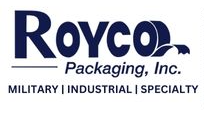In the fast-paced world of packaging, efficiency and convenience are huge. This is where the portable heat sealer steps in. They revolutionize the way people seal materials for storage, shipping, and freshness. From standard handheld heat sealers to specialized or customized handheld heat sealer devices, these compact tools have become indispensable in industrial and domestic settings. In this article, we will look into the science behind portable heat-sealing technology. We’ll explore its mechanisms, applications, and benefits.
Understanding Portable Heat Sealing
Portable heat sealers are incredible devices designed to create an airtight and watertight seal on materials such as plastics, foils, and laminates. They use heat to melt the material, forming a seal upon cooling. The key components of a handheld heat sealer include a heating element, a sealing bar, and controls for adjusting heat intensity and sealing duration. The handheld heat sealer's mobility and ease of use make it a versatile tool for a wide range of jobs.
How Portable Heat Sealers Work
- Heating Element Activation: When a portable heat sealer is turned on, the heating element begins to warm up. This element is typically made from materials with high heat conductivity, guaranteeing good heat distribution across the sealing bar.
- Material Preparation: The user places the open end of the material to be sealed between the sealing bar and the heating element. It's important to position the material precisely to ensure a proper seal.
- Sealing Process: As the user presses down on the handheld heat sealer, the sealing bar comes into contact with the material. The heat from the heating element is transferred to the material. This causes it to melt and bond together.
- Cooling and Solidification: After a moment, the user releases the pressure, and the melted material begins to cool and solidify. The result? A secure seal that effectively prevents air, moisture, and contaminants from entering or escaping the sealed package.
Applications of Portable Heat Sealers
The useability of portable heat sealers applies to numerous industries and applications:
- Food Packaging: Handheld heat sealers are widely used to seal food products, preserving freshness and extending shelf life. They are particularly popular for sealing bags of snacks, frozen foods, and perishables.
- Medical and Pharmaceutical Industries: These industries rely on airtight seals to ensure the integrity of sterile and sensitive materials. Portable heat sealers are used to seal medical equipment, medication packaging, and sample bags.
- Retail and E-Commerce: Portable heat-sealing technology plays an important part in preparing products for shipping. By creating secure seals on packaging, products stay protected during transit.
- Industrial Manufacturing: Industries that deal with chemicals, liquids, and powders require reliable sealing for safety and quality control. Handheld heat sealers help make sure hazardous materials are contained properly.
Benefits of Portable Heat-Sealing Technology
- Convenience: The compact and portable nature of these sealers makes for easy handling and storage, so they’re suitable for many settings.
- Cost-Efficiency: Portable heat sealers are a cost-effective solution for creating seals without needing expensive machinery or exhaustive training.
- Customization: Users can adjust heat settings based on the material being sealed. This helps to guarantee the best results for different types of packaging.
- Environmental Impact: By creating effective seals, portable heat sealers help to reduce food wastage. They also prevent leaks that could threaten the environment.
- Versatility: From sealing bags to creating custom packaging, portable heat-sealing technology adapts to any number of sealing needs.

